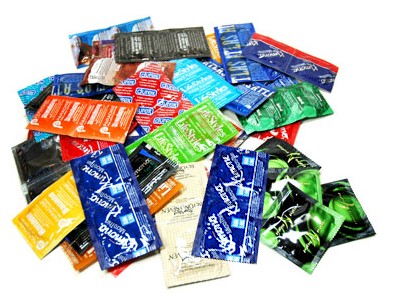Study Finds 1 in 4 US Teens Has a STD & 1/2 of Black Girls Tested Had at Least One STD

At least one in four teenage American girls has a sexually transmitted disease, suggests a first-of-its-kind federal study that startled some adolescent-health experts.
Some doctors said the numbers might be a reflection of both abstinence-only sex education and teens’ own sense of invulnerabilty. Because some sexually transmitted infections can cause infertility and cancer, U.S. health officials called for better screening, vaccination and prevention.
Only about half of the girls in the study acknowledged having sex. Some teens define sex as only intercourse, yet other types of intimate behavior including oral sex can spread some diseases.
Among those who admitted having sex, the rate was even more disturbing _ 40 percent had an STD.
“This is pretty shocking,” said Dr. Elizabeth Alderman, an adolescent medicine specialist at Montefiore Medical Center’s Children’s Hospital in New York.
“To talk about abstinence is not a bad thing,” but teen girls _ and boys too _ need to be informed about how to protect themselves if they do have sex, Alderman said.
The overall STD rate among the 838 girls in the study was 26 percent, which translates to more than 3 million girls nationwide, researchers with the U.S. Centers for Disease Control and Prevention found. They released the results Tuesday at an STD prevention conference in Chicago.
“Those numbers are certainly alarming,” said sex education expert Nora Gelperin, who works with a teen-written Web site called sexetc.org. She said they reflect “the sad state of sex education in our country.”
“Sexuality is still a very taboo subject in our society,” she said. “Teens tell us that they can’t make decisions in the dark and that adults aren’t properly preparing them to make responsible decisions.”
Cecile Richards, president of Planned Parenthood Federation of America, said the study shows that “the national policy of promoting abstinence-only programs is a $1.5 billion failure, and teenage girls are paying the real price.”
Similar claims were made last year when the government announced the teen birth rate rose between 2005 and 2006, the first increase in 15 years.
The new study by CDC researcher Dr. Sara Forhan relied on slightly older data. It is an analysis of nationally representative records on girls ages 14 to 19 who participated in a 2003-04 government health survey.
The teens were tested for four infections: human papillomavirus, or HPV, which can cause cervical cancer and affected 18 percent of girls studied; chlamydia, which affected 4 percent; trichomoniasis, 2.5 percent; and genital herpes, 2 percent.
Dr. John Douglas, director of the CDC’s division of STD prevention, said the results are the first to examine the combined national prevalence of common sexually transmitted diseases among adolescent girls. He said the data, now a few years old, likely reflect current prevalence rates.
Disease rates were significantly higher among black girls _ nearly half had at least one STD, versus 20 percent among both whites and Mexican-Americans.
HPV, the cancer-causing virus, can also cause genital warts but often has no symptoms. A vaccine targeting several HPV strains recently became available, but Douglas said it probably hasn’t yet had much impact on HPV prevalence rates in teen girls.
The CDC recommends the three-dose HPV vaccine for girls ages 11-12 and catch-up shots for ages 13-26.
Chlamydia, which often has no symptoms but can lead to infertility, can be treated with antibiotics. The CDC recommends annual chlamydia screening for all sexually active women under age 25. Trichomoniasis, also treatable with antibiotics, can cause abnormal discharge and painful urination. Genital herpes can cause blisters but often has no symptoms. It’s not curable but medicine can help.
The CDC’s Dr. Kevin Fenton said given the dangers of some STDs, “screening, vaccination and other prevention strategies for sexually active women are among our highest public health priorities.”
Douglas said screening tests are underused in part because many teens don’t think they’re at risk, but also, some doctors mistakenly think: “Sexually transmitted diseases don’t happen to the kinds of patients I see.”
Teens need to hear the dual message that STDs can be prevented by abstinence and condoms, said Dr. Ellen Kruger, an obstetrician-gynecologist at Ochsner Medical Center in New Orleans.
“You’ve got to hammer at them,” with appropriate information at each stage of teen development to make sure it sinks in, she said.
She said there are a lot of myths out there, too _ many sexually active teens think the withdrawal method will protect them, or that douching with Coca-Cola will kill STD germs.
Dr. Margaret Blythe, an adolescent medicine specialist at Indiana University School of Medicine, said some doctors hesitate to discuss STDs with teen patients or offer screening because of confidentiality concerns, knowing parents would have to be told of the results.
Blythe, who heads an American Academy of Pediatrics committee on adolescence, noted that the academy supports confidential teen screening.
Tags:
Abstinence Only Sex EducationAdolescent MedicineAmerican GirlsCenters For Disease Control And PreventionChildren S HospitalDisease Control And PreventionEducation ExpertGirls And BoysIntimate BehaviorMedicine SpecialistPlanned ParenthoodPlanned Parenthood FederationPlanned Parenthood Federation Of AmericaPrevention ConferenceResponsible DecisionsS HospitalSad StateStd PreventionStd RateTaboo SubjectWritten Web 




![Royce Castro (@TheRoyceCastro) – Xperience: Gil Cobain Hendrix [EP]](http://iamnotarapperispit.com/wp-content/uploads/2013/02/07-480x317.jpg)